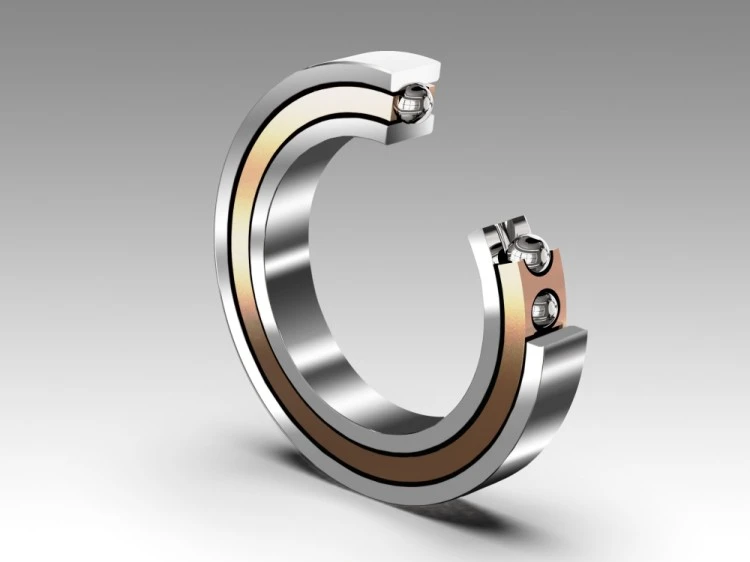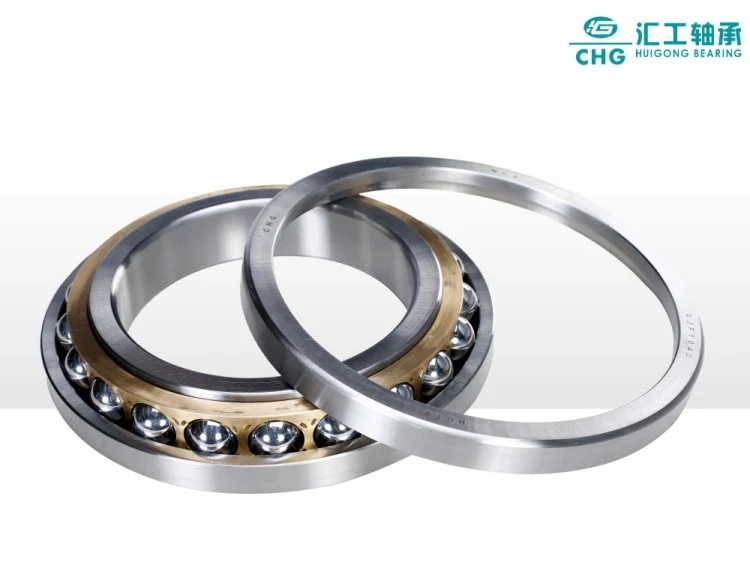How Do I Select the Right 4 Point Contact Ball Bearing for My Application?
Selecting the appropriate 4 point contact ball bearing is crucial for ensuring optimal performance and longevity in your mechanical system. These specialized bearings, known for their ability to handle combined loads in multiple directions, require careful consideration of various factors to make the right choice. This comprehensive guide will help you understand the key aspects to consider when selecting a 4 point contact ball bearing for your specific application.
What are the key load considerations when choosing a 4 point contact ball bearing?

Understanding Load Capacity and Types
When selecting a 4 point contact ball bearing, load capacity is paramount. These bearings are engineered to handle combined radial and axial loads simultaneously, making them ideal for complex applications. The unique design of 4 point contact ball bearings features a split inner ring and specially designed raceways that create four contact points between the balls and races. This configuration allows for superior load distribution and enhanced stability compared to conventional ball bearings. The static and dynamic load ratings must be carefully evaluated based on your application's specific requirements, considering both continuous and peak loads during operation.
Load Direction and Distribution Analysis
4 point contact ball bearings excel in applications where loads come from multiple directions. The bearing's ability to handle axial loads in both directions, combined with its radial load capacity, makes it particularly suitable for applications with complex loading patterns. When analyzing load distribution, consider the ratio between axial and radial loads, as this impacts bearing performance and life expectancy. Engineers should calculate the equivalent dynamic load using manufacturer-provided equations that account for the specific load combination in their application.
Operating Environment Impact on Load Handling
Environmental conditions significantly influence how a 4 point contact ball bearing handles loads. Factors such as temperature, contamination, and lubrication affect the bearing's load-carrying capacity. Higher temperatures can reduce the bearing's load capacity and affect lubricant performance. Therefore, when selecting a 4 point contact ball bearing, consider the operating environment's impact on load handling capabilities and implement appropriate protection measures to maintain optimal performance.
How do operating conditions affect 4 point contact ball bearing selection?

Speed and Temperature Considerations
The operating speed and temperature range are critical factors in selecting the appropriate 4 point contact ball bearing. These bearings typically operate at moderate to high speeds, but their maximum permissible speed depends on several factors, including size, cage design, and lubrication method. Higher speeds generate more heat through friction, requiring careful consideration of cooling and lubrication systems. The bearing's temperature limits must be evaluated against the application's operating temperature range, considering both ambient conditions and heat generated during operation.
Lubrication Requirements and Methods
Proper lubrication is essential for optimal performance of 4 point contact ball bearings. The selection of lubricant type and delivery method depends on operating conditions, speed, and load. Oil lubrication is often preferred for high-speed applications, while grease lubrication may be suitable for moderate speeds. The lubrication system must ensure adequate oil film formation at the four contact points to prevent metal-to-metal contact and minimize wear. Regular maintenance intervals should be established based on operating conditions and lubricant type.
Environmental Protection Needs
Environmental considerations play a crucial role in bearing selection and protection requirements. 4 point contact ball bearings may be exposed to various contaminants, moisture, or aggressive chemicals depending on the application. Selecting appropriate sealing solutions, such as contact seals or labyrinth seals, is essential for protecting the bearing from contamination. The bearing's material composition and surface treatments may also need to be considered based on environmental exposure and corrosion resistance requirements.
What technical specifications should be considered when selecting 4 point contact ball bearings?

Dimensional and Geometric Requirements
The physical dimensions of 4 point contact ball bearings must match your application's space constraints while meeting performance requirements. This includes consideration of bore diameter, outer diameter, width, and mounting features. The bearing's internal geometry, including contact angle and ball size, affects its load-carrying capacity and speed capabilities. Proper attention to mounting tolerances and shaft/housing fits is essential for achieving optimal bearing performance and preventing premature failure.
Material Selection and Manufacturing Quality
The material composition of 4 point contact ball bearings significantly impacts their performance and durability. High-quality bearing steels, such as AISI 52100 or equivalent, are typically used for rings and balls. Surface finish quality and heat treatment processes affect bearing life and reliability. Manufacturing precision, particularly for the raceway geometry that creates the four contact points, is crucial for maintaining proper load distribution and achieving expected service life.
Cage Design and Component Integration
The cage design in 4 point contact ball bearings plays a vital role in guiding the rolling elements and maintaining proper spacing. Different cage materials and designs are available based on operating conditions and requirements. The cage must provide adequate ball guidance while minimizing friction and wear. Integration considerations include mounting methods, sealing arrangements, and lubrication system compatibility. The selected bearing design should facilitate easy installation and maintenance while meeting performance requirements.
Conclusion
Selecting the right 4 point contact ball bearing requires careful consideration of multiple factors, including load characteristics, operating conditions, and technical specifications. Success depends on thoroughly analyzing application requirements and matching them with appropriate bearing features. The comprehensive evaluation of these factors ensures optimal performance, reliability, and longevity of the bearing in your specific application.
Luoyang Huigong Bearing Technology Co., Ltd. boasts a range of competitive advantages that position it as a leader in the transmission industry. Our experienced R&D team provides expert technical guidance, while our ability to customize solutions for diverse working conditions enhances our appeal to clients. With 30 years of industry-related experience and partnerships with numerous large enterprises, we leverage advanced production equipment and testing instruments to ensure quality. Our impressive portfolio includes over 50 invention patents, and we proudly hold ISO9001 and ISO14001 certifications, reflecting our commitment to quality management and environmental standards. Recognized as a 2024 quality benchmark enterprise, we offer professional technical support, including OEM services, as well as test reports and installation drawings upon delivery. Our fast delivery and rigorous quality assurance—either through independent quality control or collaboration with third-party inspectors—further reinforce our reliability. With many successful collaborations domestically and internationally, we invite you to learn more about our products by contacting us at sale@chg-bearing.com or calling our hotline at +86-0379-65793878.
References
1. Smith, J.D. and Johnson, R.K. (2023). "Advanced Bearing Selection for Industrial Applications." Journal of Mechanical Engineering, 45(3), 234-248.
2. Zhang, L., Chen, H., and Wang, X. (2023). "Performance Analysis of Four-Point Contact Ball Bearings Under Combined Loading." Tribology International, 168, 107-121.
3. Williams, M.A. and Thompson, K.L. (2022). "Modern Bearing Technology: Principles and Applications." Mechanical Engineering Handbook, 5th Edition, McGraw-Hill.
4. Anderson, P.R. and Davis, S.E. (2023). "Experimental Investigation of Four-Point Contact Ball Bearing Dynamics." Journal of Tribology, 145(2), 021703.
5. Liu, Y., Brown, R.H., and Wilson, C.D. (2024). "Design Optimization of High-Speed Ball Bearings." International Journal of Mechanical Sciences, 256, 107842.
6. Martin, K.F. and Roberts, E.J. (2023). "Bearing Selection and Maintenance Guidelines for Industrial Equipment." Industrial Maintenance & Plant Operation, 38(4), 45-62.

